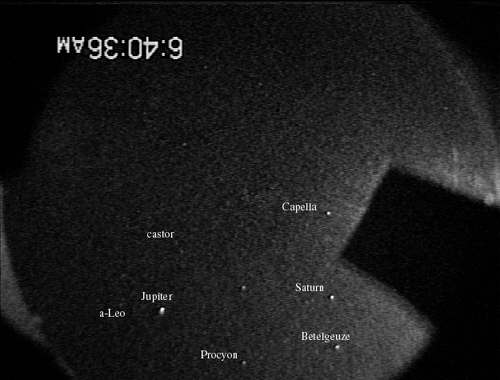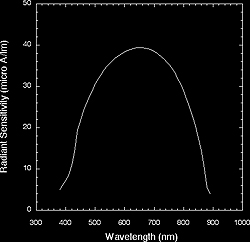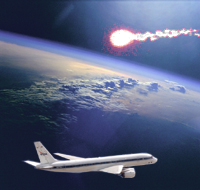|
Intensified all-sky camera
Instrument P.I.: Peter Jenniskens, SETI Institute.
The information below will be updated as more precise data is received.
Technique: Wide field intensified camera with all-sky lens.
Scientific objective: To measure the total radiative output of the SRC during entry in the 400 - 900 nm band.
Instrument: Part of INT system. This camera consists of a 15 mm f2.8 Canon lens, an XX1332 image intensifier with large 48-mm photocathode, and a Sony handycam camcorder (recording of video output on Hi-8 tape in NTSC format - 640 x 480 pixels). The field of view is about 160¼ when mounted so that the dome does not obstruct. Moonlight is blocked by covering the zenith part of the dome.
Heritage: This camera was flown before to record meteors. Same setup.
Aircraft hardware requirements: Fixed mount. Electricity at window. Optional: operation on batteries.

Instrument validation tests: This cameras was flown before for near-real time flux measurements of meteor storms during the 2002 Leonid MAC mission when a bright Moon was at about 38 degree elevation (see picture above).
Sensitivity: With a 160 degree field of view in long axis of camera (left-right on aircraft) and 124 degree in short axis (front-aft), the star limiting magnitude is about +3.0 magnitude, somewhat less with Moonlight. 2002 Leonid MAC mission record has lmiting magnitude about +2.0.
Here, we will choose 160¼ fov in short axis (front-aft), further lowering the limiting magnitude to about +1.
Dynamic range: 8-bit (factor 256).
Frame rate and exposure times: 30 frames per second, 60 fields (odd, even, interlaced) per second. Exposure time is nearly 1/60s per field.
Spectral resolution - gives the FWHM of an instrument-broadened unresolved atomic spectral line:
none
Relative spectral response - gives the wavelength dependence of the intensifier. The Quantum Efficiency of the system depends somewhat on the angle of viewing through the window (near-UV cut-off) and the choice of objective grating:

wavelength: Radiant sensitivity:
(nm) (micro A/lm)
380 5.000
390 6.000
400 7.200
410 8.500
420 11.000
430 14.000
440 19.500
450 21.798
460 23.878
470 25.771
480 27.492
490 29.051
500 30.462
510 31.736
520 32.883
530 33.912
540 34.832
550 35.650
560 36.374
570 37.010
580 37.563
590 38.037
600 38.436
610 38.763
620 39.019
630 39.207
640 39.325
650 39.375
660 39.353
670 39.258
680 39.088
690 38.837
700 38.502
710 38.077
720 37.555
730 36.929
740 36.192
750 35.334
760 34.346
770 33.217
780 31.936
790 30.491
800 28.868
810 27.054
820 25.034
830 22.792
840 20.313
850 17.579
860 14.520
870 10.000
880 5.500
890 4.000
|











